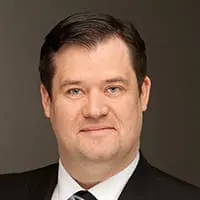Publication
Amendments to Rights of Federally Funded Inventions and Government Owned Inventions
by Justin E. Culbertson, Ph.D., Grant T. Langton, Ketan S. Vakil and Jeffrey D. Morton, Ph.D.
On April 13, 2018, a final rule was published in the Federal Register adopting proposed rule changes from the National Institute of Standards and Technology (“NIST”).1 The rule change reduces regulatory burdens by clarifying electronic reporting, streamlining the licensing application process, and clarifying the role of funding agencies in the Bayh-Dole process.
The Bayh-Dole Act
In 1980, Congress approved the Bayh-Dole Act (“BDA”) in order to address concerns about the commercialization of technology developed with public funds. The BDA awards title to inventions made with federal government support to a contractor if the contractor is a small business, a university, or other nonprofit institution. As a result, universities that file for patent protection using government funding can obtain and own a patent on its invention, thus giving the university an exclusive right in the invention during the patent’s term. Hence, from 1980 through 2002, universities increased the rate of patents previously obtained by a factor of 10. Furthermore, from 1996 until 2013, the revenue earned from university patents was $518 billion and has created 3.8 million American jobs.2
Current NIST’s Rule Modifications
NIST’s rule amendments to 37 C.F.R. §§ 401 and 404 made several changes to this well-known regulatory scheme. More specifically, the amended rules:
- Apply to all new funding agreements as defined in 37 C.F.R. § 401.2(a). The amended rules shall not apply to funding agreements in effect on or before the effective date, which is May 14, 2018, of the amended rules.
- Allow a federal agency to file an initial patent application, in consultation with a contractor, which definition includes universities, if a federal employee is a co-inventor.
- Require a contractor to file a non-provisional application 10 months after filing a provisional application.
- Do not prescribe the type of license (exclusive, non-exclusive, or partially exclusive) to be granted, the result of which is that a contractor is accorded the flexibility to promote the practical application and public availability of the inventions.
- Increase the agencies’ authority to shorten the two-year period in which a contractor may elect to retain title.
- Remove the 60-day time limit within which a federal agency must make a written request to a contractor to convey title, after learning of the failure of the contractor to disclose an invention or elect title within the specified times.
- Require contractors to notify the government agency of any decision not to prosecute an application at least 60 days before the end of any applicable USPTO deadline, which does not include extension of time periods.
- Clarify what occurs when a federal employee is a co-inventor of the subject invention.
- Clarify certain definitional language. For example, the new rules clarify that “initial patent application” means the “first provisional or nonprovisional U.S. national application for a patent.”
Takeaways
Many of the rule changes are meant to clarify existing law. However, contractors may want to take special notice of the changes in timelines set out in the proposed amendments.
First, the federal agency may, in its discretion, elect to shorten the two-year election time period. Thus, contractors may want to consider being cognizant of this point during contract negotiations, and prepared to make early decisions as to whether they want to take ownership of intellectual property generated under a funding agreement.
Second, the amended rules remove the 60-day deadline to cure the failure to timely disclose or elect title to a subject invention. As such, a federal agency may take title from the contractor at any point there is a failure in disclosure. To avoid inadvertent transfer of title, contractors may want to strictly adhere to these timelines.
Third, if a contractor decides to pursue patenting an invention, the contractor may want to consider being prepared to make quick decisions regarding patent prosecution. As noted, new rule amendments require the contractor to give 60 days’ notice in the event the contractor has decided to discontinue prosecution of a subject invention. By way of example, if a contractor receives a non-final Office Action with the usual initial three-month response deadline and three additional months of available extensions, the contractor will need to determine no less than 60 days prior to the expiration of the statutory deadline whether it intends to respond to the Office Action – or alert the federal agency. As a result, contractors may want to consider changing their internal patent prosecution practice.
Finally, contractors may want to consider paying increased attention when government employees are working with contractor personnel and there is a joint inventors’ scenario. In the event there is joint invention between a government employee and a contractor employee under a procurement contract, grant, or cooperative agreement subject to BDA, it is likely to be in the contractor’s best interest to control patent prosecution, not the federal agency.
About Snell & Wilmer
Founded in 1938, Snell & Wilmer is a full-service business law firm with more than 500 attorneys practicing in 17 locations throughout the United States and in Mexico, including Los Angeles, Orange County, Palo Alto and San Diego, California; Phoenix and Tucson, Arizona; Denver, Colorado; Washington, D.C.; Boise, Idaho; Las Vegas and Reno, Nevada; Albuquerque, New Mexico; Portland, Oregon; Dallas, Texas; Salt Lake City, Utah; Seattle, Washington; and Los Cabos, Mexico. The firm represents clients ranging from large, publicly traded corporations to small businesses, individuals and entrepreneurs. For more information, visit swlaw.com.




